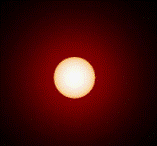Department of Physics and Astronomy: Publications and Other Research

Norman R. Simon Papers
Document Type
Article
Date of this Version
1984
Citation
Theoretical Problems in Stellar Stability and Oscillations, Proceedings of the Twenty-Fifth Liege International Astrophysical Colloquium, Liege, Belgium, July 10-13, 1984. Colloquium supported by the Ministere de l'Education Nationale, FNRS, Universite de Liege, et al. Cointe-Ougree, Belgium, Universite de Liege, 1984, p.26-27
Abstract
CO Aur is a Pop. I Cepheid, pulsating in two modes with periods Pl = 1.78 days and P2 = 1.53 days. The ratio of these periods indicates radial pulsation in the first and second overtones. Antonello and Mantegazza (1984) Fourier decompose the light curve of CO Aur and offer further evidence favoring overtone pulsation, based upon the Fourier diagrams of Simon and Lee (1981). Mantegazza (1983) estimates a temperature for CO Aur of log Te = 3.825±0.023.
Employing the Lagrangian code described by Aikawa and Simon (1983), we have constructed two linear nonadiabatic (LNA) pulsation models for CO Aur, both with normal Pop. I composition X = 0.70, Z = 0.02) and an evolutionary mass-luminosity relation. The first model has M = 5.2 Mʘ, L = 1500 Lʘ and Te = 6700 K, corresponding to the temperature quoted above. The periods and growth rates (P,n) for the three lowest radial modes of this model are (2.41, -6.55E-3). (1.81, -1.26E-2) and (1.45, -1.51E-2). Although the periods of the first and second overtones match those of' CO Aur quite well, all of the modes are linearly stable and thus not expected to appear at finite amplitude.


Comments
Copyright 1984 IAGL.